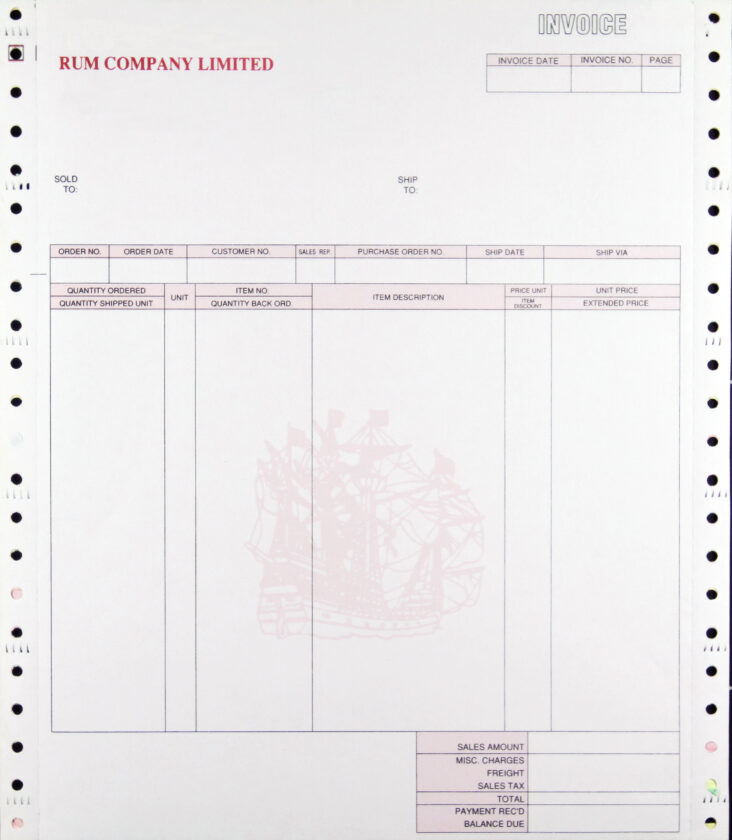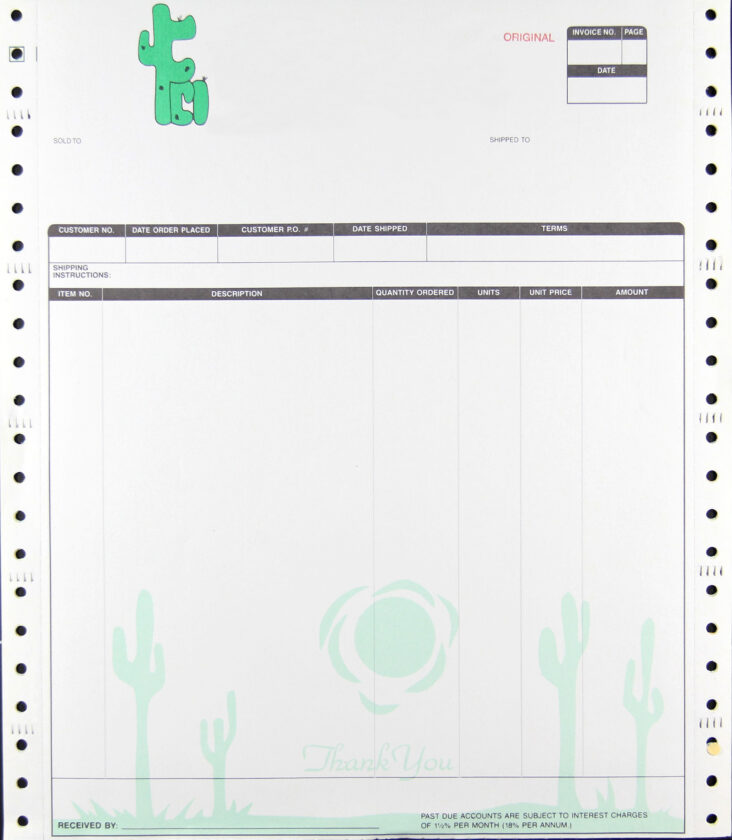Key Takeaways:
• Continuous Form Printing’s Viability: Despite the digital shift, continuous form printing remains a valuable niche in the print industry, especially for sectors like trucking, finance, and HVAC, which have consistent demand for such products.
• Understanding and Education: Success in continuous form printing requires a deep understanding of the medium and customer needs. Educating clients about the benefits and applications of continuous forms can help secure business.
• Opportunities in a Niche Market: As competitors exit the continuous form printing market, opportunities arise for those who specialize in it. Printers and distributors can leverage existing client relationships to introduce continuous forms and expand their business.
The world is going digital. There’s no doubt about it. For the print sector, the simple truth is that products that were once enough to build a whole business upon are currently a piece of a company’s overall puzzle.
Nonetheless, the key thing to remember is that they’re still a piece – digital hasn’t fully usurped print’s place in a variety of markets and applications.
Case in point: Continuous form printing, while sometimes associated with the dot matrix printing of previous decades, remains a valued part of the print industry, as long as printers and distributors understand the medium and where to find customers.
Broadly speaking, continuous form is a method of printing where the paper is constantly fed through the printer. It’s typically used to create items like checks, billing statements, invoices or purchase orders. And while the cynical may scoff that its days are numbered, the reality is that it remains a viable niche. With that in mind, here’s a look at how printers and distributors can make continuous forms a worthwhile piece of their business.

Who Still Wants Paper?
Hillsboro, OH-based Highland Computer Forms (HCF) specializes in print products like labels, books, pads and medical forms, in addition to continuous form products and jumbo roll printing.
HCF Vice President Rob Jones says that for the company’s continuous forms business, the trucking and financial industries are some of the most reliable clients.
The HVAC market is also a steady customer, according to Mike Allen, general manager of several print plants for Midlothian, TX-based Ennis Inc. (asi/52493).
In 2023, Allen relates, there came a large order from an HVAC company for 100 million printed forms per year. The company’s previous print provider stopped doing continuous form printing, so the HVAC company now needed to find someone else.
“We get orders every day for continuous forms,” Allen says. “When other companies or competitors have closed the door on them or have written them off, I’m fine with that because I’m picking up what’s out there.”
Indeed, in an industry with fewer players, when a company drops a service like continuous form printing, it creates an opportunity for those who still specialize in the category to attract new customers. And there’s a recurring benefit to that for those still doing continuous form printing: Client need for it is typically, well, continuous. “The demand is pretty constant,” Jones says.
Just What Is a Continuous Form?
If the idea of consistent demand and less competition sounds good, those keen to enter the continuous forms space, who aren’t already doing so, need to develop their knowledge of the medium.
Bob Saunders can help with that.
The vice president of sales for Wise Business Forms shares that, as their name implies, continuous forms are manufactured from a continuous web and are not cut into individual forms before they’re used.
“They use a perforation to separate the forms that are then folded into a stack,” Saunders explains. “The forms are printed through a dot matrix printer or high-speed impact printer. The perforations allow the forms to be easily torn off into individual pages.”
Because of the perforations, the forms can be easily torn off into individual pages. “A continuous form can be manufactured as a multiple part form – carbonless or bond and carbon – or a one-part form,” Saunders says.
Such forms are preprinted with company-specific information, such as a company logo, address and form-specific static information, required by a particular job or account. The forms arrive in a folded stack and are run through the printer in-house at the customer site as needed. “This offers a fast convenient workflow, especially when distributing multi-part forms,” asserts Saunders.
For example, a driver may deliver a shipment of spirits at a liquor distributor and take with him a three-ply form. He drops off the pallets at ABC Liquor Distributors and leaves them with one copy at the dock. “He then brings back the other two parts – one for his front office and one for sales,” Saunders explains. “It’s fast, easy and accessible to all employees – no IT required.”

How To Sell Them
Once you have a firmer understanding of the product, and have identified potential customers for it, you still need to close the deal. While Allen’s story of a company ordering millions upon millions of forms sounds like fish jumping into the boat, that’s obviously not always the case.
For Jones, the first step is education. Listen to your customers and familiarize yourself as much as possible with their business so you can understand how the print products can be a solution. “Just know what the end-user needs and how the entire project or application is used,” he says.
In the spirit of continuous forms playing a role, rather than being the focal point of a print operation, a printer or distributor could potentially add them to an existing client relationship.
“You aren’t likely to lead with continuous forms,” Saunders explains. “But if you’re already in an account, simply show up. Ask them what kind of forms they’re still buying. If you’re getting business from the marketing area, ask for a referral into other departments – accounting, finance and operations.”
He recalls one distributor scoring a $50,000 order that way.
The distributor was visiting a top client and simply asked if they needed continuous forms. It turned out that they did, and a new avenue of business opened up for the distributor. Plus, the client was happy that the distributor could be its single contact for continuous forms.
Such manufactured serendipity can strike for a promotional products distributor, too.
“Although you might be talking to a customer about their next marketing campaign or their swag, like branded T-shirts, hats and mugs, don’t forget that in the back, where they’re loading the trucks, they’re likely still using continuous forms for their packing list and inventory list to sign off,” Saunders says. “So, ask the question. You might be surprised at what happens.”



